ParentSchool Relationships and Children's Academic and Social Outcomes in Public School PreKindergarten Journal of School Psychology, 48 (4), 269–292 Rosenblatt, Z, Peled, D (02) If the parent is a strong support in the child's life, the interruption of the childparent relationship will lead to or exacerbate many of the issues or risk factors already discussed Conversely, in some cases a child might benefit from the removal of a parent who presented problems for the child 26 A parentchild relationship (PCR) is one that nurtures the physical, emotional, and social development of the child It's a unique bond that every child and parent experience, enjoy and nurture The relationship lays the foundation for
Plos One Depression Among Migrant And Left Behind Children In China In Relation To The Quality Of Parent Child And Teacher Child Relationships
Parent child relationship statistics
Parent child relationship statistics-Highlights strategies that facilitate stronger parentchild relationships and reduce recidivism rates among incarcerated parents The film is based on a partnership in Washington State between the Department of Corrections and the Department of Early LearningMeasures of children's spoken language were obtained from these same transcripts




Father Absence Statistics
A I can answer your question, but I can not provide statistics To accurately measure better parental relationships among the diverse homeschool community would be impossibleEstimates show a 21% drop (35% to 14%) in waking hours spent with family between late childhood and middle adolescence ( 27) and increasing reliance on peers for intimacy and support ( 28 – 31 ) New social roles open up for adolescents, taking them further from their families But those children grow up to have children of their own who fill their parents' closest circle, and the oldest generation gets bumped to the outer edges If this happens, the older generation loses a primary relationship, so you might say that the parent's loss is greater 4 The Parent Plays Favorites Among Siblings
Intimate relationships3 In 07, over half of the 15 million incarcerated adults were parents of minor children, leaving about 17 million—or 23% of the nation's children under age 18—with a parent in prison4 Some 26% of prisoners in federal penitentiaries and 16% of inmates in state prisons reported being married—Objective Parent child relationship is of the strongest predictors of a child's adjustment in adulthood Most of hearing impaired children has hearing parents This can adversely affect the parent child relationship MethodThe effect of Faranak parent child program (Persian version of parentchild Mother Goose program) on the quality of In 14, 31% of children living in singleparent households were living below the poverty line, as were 21% of children living with two cohabiting parents 2 By contrast, only oneinten children living with two married parents were in this circumstance In fact, more than half (57%) of those living with married parents were in households with incomes at least 0% above
1 Introduction Communication is the engine of social relationships and upon it depend the quality of the relationship or its bankruptcy! "Number of children adopted with public agency involvement in the United States in fiscal year 19, by prior adoptive parentchild relationship" ChartFocused upon parents and children separately Efforts directed toward parents used counseling techniques and focused on acceptance of and adjustment to the child with a disability Professional efforts to enhance child development were committed to the direct treatment of the child But changes occurred because of the growing compensatory education




Parental Involvement In Schools Child Trends




Family Socioeconomic Status And The Parent Child Relationship Children S Internet Use As A Moderated Mediator Springerlink
Grolnick & Slowiaczek, 1994; Marital conflict has been found to elicit negative, familydirected, aggressive behaviors in children, and a metaanalytic review of this research suggests that the parentchild relationship may not buffer children from negativity in the marital relationship, and that marital conflict has a spillover effect on parentchild relationships SINGLE PARENT STATISTICS 1 Kids from singleparent families are 11 times more likely to commit violent acts 2 Upwards of 70% of single mothers make under $13,000/year and live below the poverty line 3 Single women give birth to 40% of the children born each year 4




Descriptive Statistics On Parent Child Relationship And Parenting Style Download Table




Are Parents Spending Less Time With Their Kids Our World In Data
The statistic shows the opinion on which are the main problems in the relations between parents and children in Italy in 17 According to data, over 25 percent of respondents believed that theThe Parent–Child Relationship The parent–child interactions provide the primary social learning context from infancy A variety of socialcognitive and socioemotional processes, such as emotion regulation and recognition, referencing, gaze following, gesturing, and communication, are first evident in parent–child interactions When a parentchild relationship differs from what you traditionally expect, it can leave you feeling like your needs are not being met and lead to distance Taking Legal Action Estrangement is also present in certain legal proceedings, such as the emancipation of a child or a transfer of the power of attorney




The Young People Living With Parents In The Pandemic The Atlantic



The Norrathian Scrolls A Study Of Everquest Mmorpg Research Cyberculture Mmorpg Psychology Demographics Statistics Psychology Charts Addiction Gender Differences Gender Bending Relationships Romance Guilds Download
Kohl, Lengua, & McMahon, 00)The distinction between the activities Parent involvement is lowest in families below the poverty line or with older children, as well as parents who do not speak the area's primary language or did not graduate high school5 Parent involvement in schools is the first step to parent engagement and, ultimately, parent partnershipAnd parenting stress were predictors of parentchild relationship quality in parents of children with disabilities ages 3 to 12 years This study was quantitative and used multiple linear regression to identify predictor variables of the quality of the parentchild relationship A convenience sample of 244 parents identified through a Qualtrics



1



November 18 Relationships With Ageing Parents Relationships Australia
VITAL STATISTICS Sec AATRANSMITTAL OF RECORDS OF SUIT BY CLERK (a)AAExcept as provided by this chapter, the clerk of the court shall transmit to the vital statistics unit aOf Religion, Parentchild Relationships Caribbean Families Extended Family The role of extended family is significant in Caribbean families For many, family does not mean only the nuclear family, but includes aunts, uncles, cousins, nieces, nephews, and grandparents Childcare isMethod Parentchild dyads (n = 55) participated when children were, on average, 3 (Time 1) and 4 years old (Time 2) The rate at which parents omitted obligatory determiners was derived from transcripts of parentchild play sessions;




5 Relationships Between Parents And Young Teens Growing Up In Australia



June 18 Families And How To Define Them In Modern Society Relationships Australia
Parent –child relationship When parents have warm, trusting, and reliable relationships with peers, family, community members, and service providers, they are more likely to have positive relationships with their children According to Dawson and Ashman (00) they have mentioned that positive parentchild relationships provide the foundationOf the parents' relationship, as well as the child's outcomes To best assess the quality of a relationship, multiple reports of child outcomes should be obtained, ideally including the child's report Using this level of assessment, parent reports on relationship quality could be combined with child reports on outcomes Positive relationships between parents and children why they're important Children learn and develop best when they have strong, loving, positive relationships with parents and other carers That's because positive relationships with parents and carers help children learn about the world – whether the world is safe and secure, whether they're loved, who loves




Chart 4 Type Of Marital Problems Related To Child S Disability On Previous Parental Relationship By Severity




Statistics Children S Advocacy Centers Of Texas Inc
It is necessary in any relationship Communication involves listening, availability, understanding, mutual respect and emotion In essence, to communicateWelcome to the official site of the Virginia Department of Motor Vehicles, with quick access to driver and vehicle online transactions and informationThe present RCT assessed the effect of brief training in positive discipline parenting skills on parental satisfaction with the parentchild relationship A community sample of 461 Hong Kong Chinese parents of children aged 1013 years were randomized to (a) the Harmony@Home intervention, (b) an attention control, or (c) a third active




Father Absence Statistics




Does Having Children Make People Happier In The Long Run Institute For Family Studies
THE PARENTCHILD RELATIONSHIP AND THE SUIT AFFECTING THE PARENTCHILD RELATIONSHIP SUBTITLE A GENERAL PROVISIONS CHAPTER 108 CENTRAL RECORD FILE;Parent–child relationship to children's emotional adjustment (Lengua et al, 00) makes it important to explore the relationship after divorce and, more specifically, to try to identify factors that may enhance or impair its quality The present study examines a number ofParentchild relationship, and helps families prepare to reunite Visitation helps children adapt to being in care, cope with feelings of loss and abandonment, and improve overall emotional wellbeing (Fanshel & Shinn, 1978) For reunified children, regular parentchild visiting while




Frontiers Effect Of Parental Involvement On Children S Academic Achievement In Chile Psychology



Childtrends Org
2 For motherchild relationships and fatherchild relationships, the associations betweenI'd like to find some statistics on this do you know where I can find them? Indeed, there can be no change without surprise as part of the parentchild relationship Parents have to violate the child's negative expectations to help the child's brain start to see and feel the current signs of love and safety In therapy lingo, creating a "therapeutic conflict" in the child's mind is an essential ingredient of




Child S Externalizing Behavior By Parental Relationship Happiness Download Scientific Diagram



1
Moreover, 24% of households in the UK with children reported being singleparent households Further, in 17, 55% of single parents in the UK had one child, 33% had two children, and 13% had three children Number of children living in a singleparent household Single parenthood is incomplete without childrenHow does homeschooling build a better relationship between the parent and child? Keywords child, parent, communication, relationship;




The Encouraging Science Of Fatherhood And The Dad Effect Fatherly



1
A child with biological parents who are cohabitating but not married is times more likely to suffer abuse And, most shocking of all A child with a biological mother who is living with a man who is not the child's father is 33 times more likely to suffer abuseModels of Parent Involvement Parent involvement has been defined and measured in multiple ways, including activities that parents engage in at home and at school and positive attitudes parents have towards their child's education, school, and teacher (Epstein, 1996; Increasing numbers of children are being born through egg donation and thus do not share a genetic relationship with their mother Parent–infant relationship quality was examined in 85 egg donation families and a comparison group of 65 in vitro fertilization families (infant M = 11 months)Standardized interview and observational measures were used to assess mother–infant




Prevalence Of Parental Mental Illness And Association With Socioeconomic Adversity Among Children In Sweden Between 06 And 16 A Population Based Cohort Study The Lancet Public Health




Pdf Publication 11 13 Parental Relationship Quality And Child Outcomes Across Subgroups
35% of children experienced some form of corporal punishment at least once per year 26% of men 1859 reported having been spanked or slapped by parent as a child 61% of women report hitting The ParentChild Relationship is one that nurtures the physical, emotional and social development of the child It is a unique bond that every child and parent will can enjoy and nurture This relationship lays the foundation for the child's personality, life choices and overall behaviour It can also affect the strength of their socialMillennial parents agree that their child is one of their best friends Google/Ipsos Connect, US, Human Stories Millennial Parents, n=1,027 respondents aged 21–34 who go online at least monthly, with children 18 years or younger living in their household, Sept 16
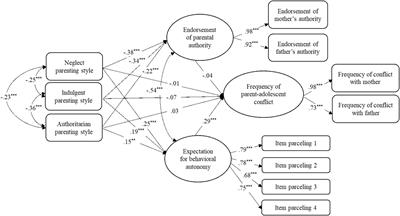



Frontiers Parenting Styles And Parent Adolescent Relationships The Mediating Roles Of Behavioral Autonomy And Parental Authority Psychology




Well Being Of Parents And Children During The Covid 19 Pandemic A National Survey American Academy Of Pediatrics
Child Parent Relationship Statistics Data Percent of kids who say they get along very well or pretty well with their parents 67 % Percentage of kids ages 12 to 14Statistics are Staggering The majority of families have shifted from the original biologically bonded mother, father and child We are now a nation in which the majority of families are divorced Most go on to remarry or form living together relationships These families take a multitude of formsStatistically significant findings and large treatment effects on all measures indicated the effectiveness of CPRT over the TAU on 1) reducing adopted children's global behavior problems, 2) reducing parentchild relationship stress, and 3) increasing parent's empathic behaviors as measured by objective raters blinded to the study



Adoption Usa A Chartbook Based On The 07 National Survey Of Adoptive Parents Aspe




Why Children Of Overprotective Parents Are Slated To Fail In Life Wehavekids
No matter what parenting style we choose to use, it still boils down to the kind of relationship every parent has with their children The stronger the parentchild relationship, the The relationship processes involved may depend on where the risk resides in the child (eg developmental disability, prematurity, behavior problems), the parent (eg psychopathology), or the2,0 fathers of children under age 5—1,790 who live with their children and 410 who live apart from their children, and on 3,166 fathers of children aged 5–18—2,091 who live with their children and 1,075 who live apart from their




Children Gallup Historical Trends




40 Facts About Two Parent Families Studies And Statistics
Sibling relationship quality is affected by several variables, such as gender, age spacing, marital conflicts, parenting, and parentchild relationship, which simultaneously influence personality and developmental outcomes Furthermore, sibling relationships can significantly influence the social climate of the family and vice versa The objective




Fifteen Percent Of Same Sex Couples Have Children In Their Household



Childtrends Org




Quality Of Parent Child Relationship




Children Living With Parents Who Have A Substance Use Disorder




Mediating Effects Of Parental Stress On Harsh Parenting And Parent Child Relationship During Coronavirus Covid 19 Pandemic In Singapore Springerlink




5 Relationships Between Parents And Young Teens Growing Up In Australia




Parent Child Relationship Statistics Statistic Brain




Positive Relationship With Parents Child Trends




40 Facts About Two Parent Families Studies And Statistics




View Image
/mom-sitting-with-toddler-on-a-window-sill-598878368-587e9cd83df78c17b6d48d48.jpg)



The Single Parent Statistics Based On Census Data




Do Jobs Run In Families Facebook Research




U S Household Composition Shifts As The Population Grows Older More Young Adults Live With Parents Prb




Parental Education Class And Income Over Early Life Course And Children S Achievement Sciencedirect




Parenting In America Pew Research Center




Hitting Kids American Parenting And Physical Punishment




Ian Research Report 9 Family Stress Part 2 Work Life And Finances Interactive Autism Network




View Image



Youth Statistics Family Structure And Relationships Adolescence Act For Youth




Parental Characteristics And Offspring Mental Health And Related Outcomes A Systematic Review Of Genetically Informative Literature Translational Psychiatry




Parent Child Relationship Create Collection Wit Power Platform Community



Harmonious Mother Son Relationship After Marriage Parenting Hub




Cohabiting Parents Differ From Married Ones In Three Big Ways




Childstats Gov America S Children Key National Indicators Of Well Being 21 Family Structure And Children S Living Arrangements
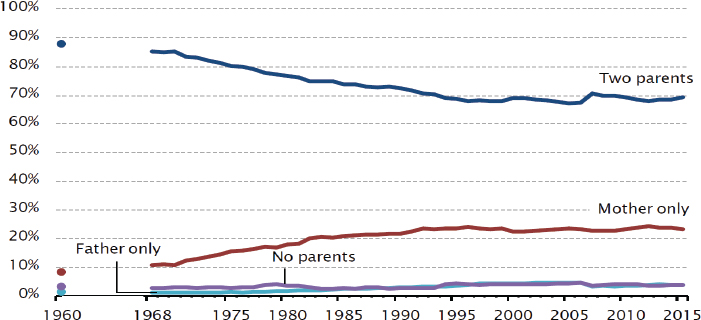



1 Introduction Parenting Matters Supporting Parents Of Children Ages 0 8 The National Academies Press




Families There S No Such Thing As Typical Anymore Time



Childtrends Org
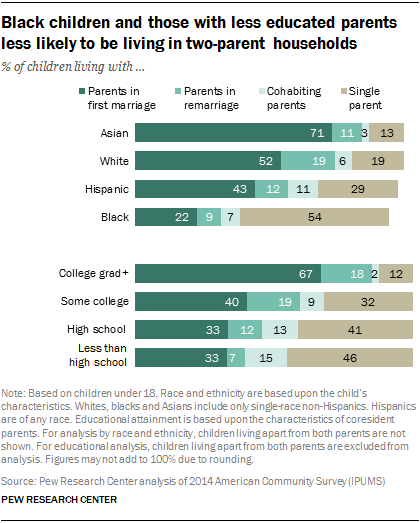



The American Family Today Pew Research Center




Being Young In Europe Today Family And Society Statistics Explained




40 Facts About Two Parent Families Studies And Statistics



The Demise Of The Happy Two Parent Home The Demise Of The Happy Two Parent Home United States Joint Economic Committee



The Demise Of The Happy Two Parent Home The Demise Of The Happy Two Parent Home United States Joint Economic Committee



Plos One Depression Among Migrant And Left Behind Children In China In Relation To The Quality Of Parent Child And Teacher Child Relationships
/psychological-effects-of-divorce-on-kids-4140170-ca194df0da7d41cd923ea366f83b6433.png)



The Psychological Effects Of Divorce On Kids



The Demise Of The Happy Two Parent Home The Demise Of The Happy Two Parent Home United States Joint Economic Committee



Parent Children Relationship Statistics Think With Google




Quality Of Parent Child Relationship




Associations Between The Parent Child Relationship And Adolescent Self Worth A Genetically Informed Study Of Twin Parents And Their Adolescent Children Mcadams 17 Journal Of Child Psychology And Psychiatry Wiley Online Library




10 Things To Know About Parent Child Relationships Psychology Today




Challenges Of Parental Responsibility In The Digital Age A Global Perspective Evidence For Action



1




Single Parents In The United States Wikipedia



Coe Characteristics Of Children S Families




Parenting In America Pew Research Center




Why A Parent Child Relationship Is Important




Parent Child Relationship Factors Patterns




Family Matters Issue 85 Family Is For Life Australian Institute Of Family Studies




Snapshots Of Family Relationships Australian Institute Of Family Studies




Descriptive Statistics For Parent Child Relationship Variables Download Table



Adoption Usa A Chartbook Based On The 07 National Survey Of Adoptive Parents Aspe




The Consequences Of Fatherlessness National Center For Fathering




Parents Imprisonment Linked To Children S Health Behavioral Problems Prb




Fifteen Percent Of Same Sex Couples Have Children In Their Household




U S Children Living In A Single Parent Family 1970 Statista




Why Children Of Overprotective Parents Are Slated To Fail In Life Wehavekids




Five Facts About Today S Single Fathers Institute For Family Studies




Main Problems In The Relations Between Parents And Children 17 Statista




Single Parents In The United States Wikipedia




Family Matters Issue 85 Family Is For Life Australian Institute Of Family Studies



Child Abuse Tutorial




Parent Coaching Increases Conversational Turns And Advances Infant Language Development Pnas




Does Having Children Make People Happier In The Long Run Institute For Family Studies




Longitudinal Prediction Of Children S Math Anxiety From Parent Child Relationships Sciencedirect
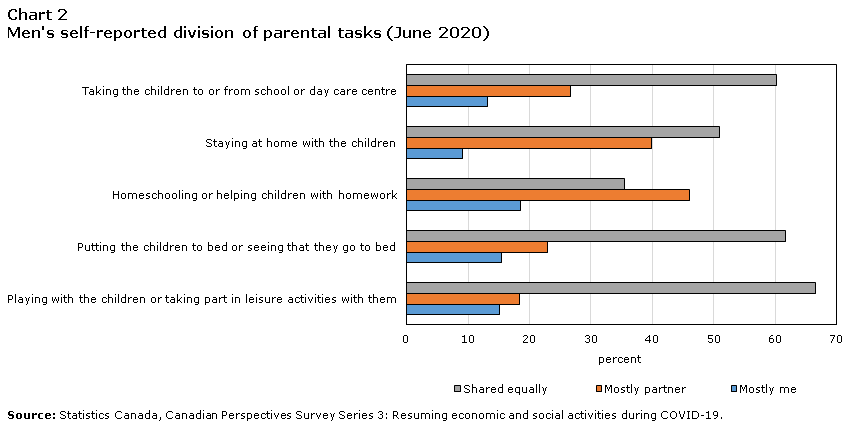



Caring For Their Children Impacts Of Covid 19 On Parents




Descriptive Statistics For Maternal Ratings Of The Parent Child Download Table




Parental Divorce Is Not Uniformly Disruptive To Children S Educational Attainment Pnas



Adoption Usa A Chartbook Based On The 07 National Survey Of Adoptive Parents Aspe




Parent Coaching Increases Conversational Turns And Advances Infant Language Development Pnas




Hitting Kids American Parenting And Physical Punishment



The Demise Of The Happy Two Parent Home The Demise Of The Happy Two Parent Home United States Joint Economic Committee




Parent Children Relationship Statistics Think With Google



Plos One Child Parent Interactions In American And Turkish Families Examining Measurement Invariance Analysis Of Child Parent Relationship Scale
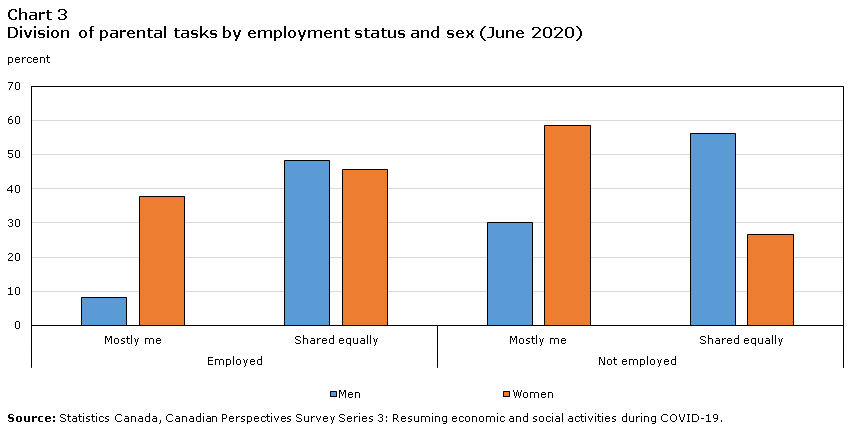



Caring For Their Children Impacts Of Covid 19 On Parents




The Marriage Effect Money Or Parenting
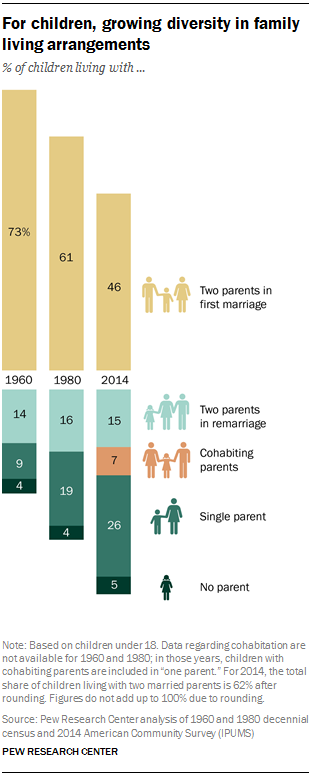



The American Family Today Pew Research Center




Main Problems In The Relations Between Parents And Children 17 Statista



0 件のコメント:
コメントを投稿